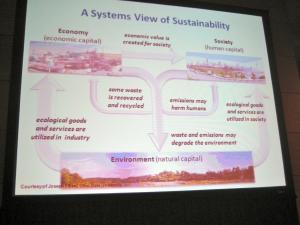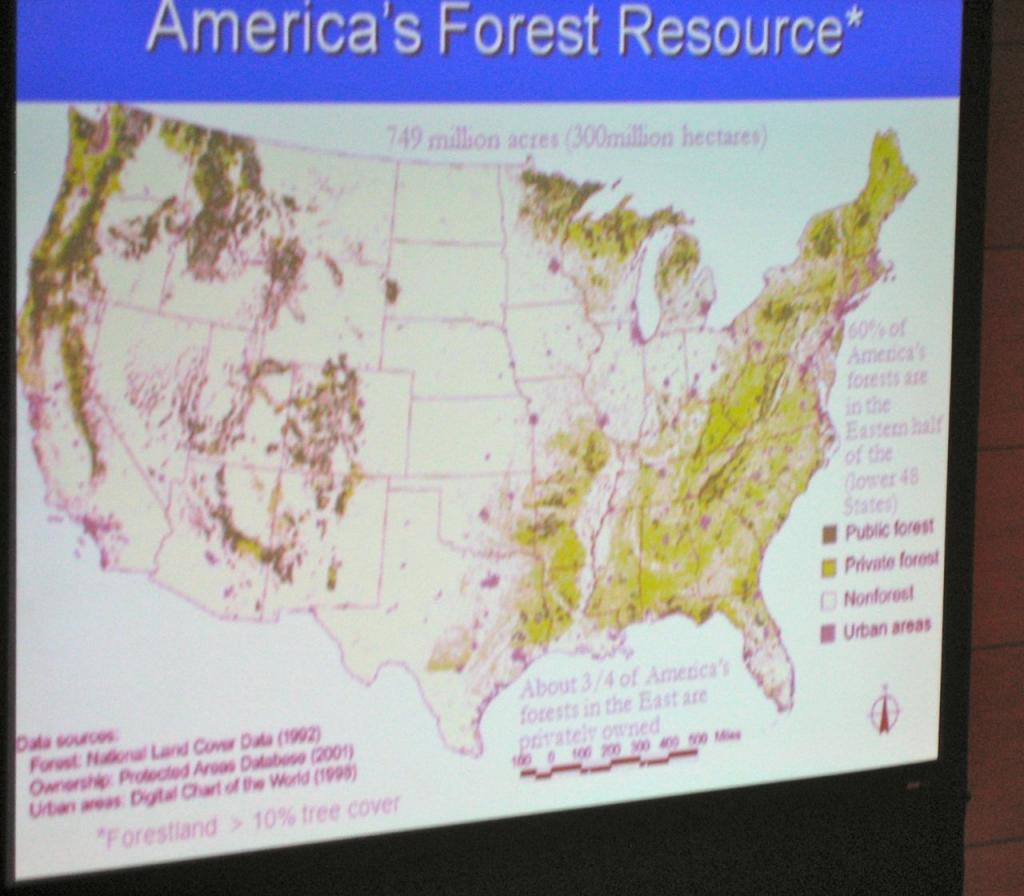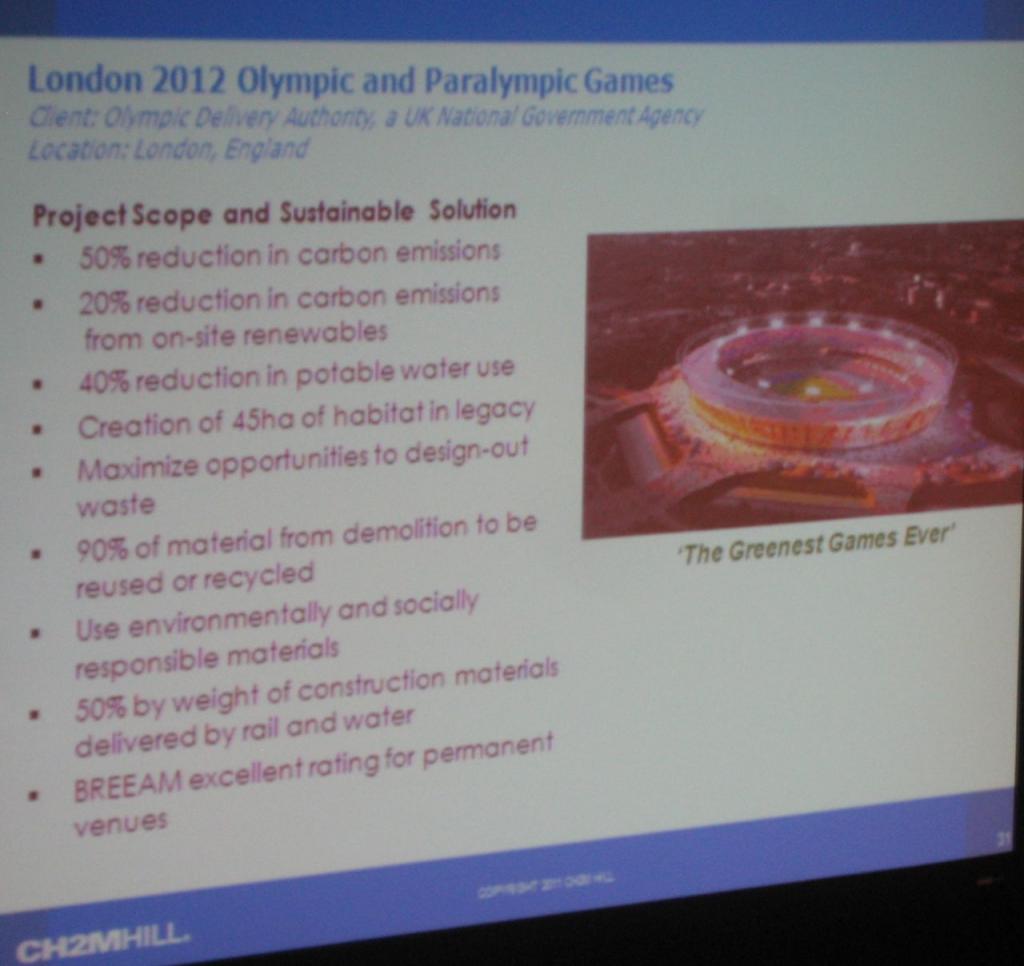
AIChE's 2011 Annual Meeting marks the first year for the World Congress on Sustainable Engineering Plenary. The World Congress served as the official introduction to sessions pertaining to all aspects of sustainability in applications relevant to chemical engineers. This first-of-its kind congress was organized collaboratively by the Sustainable Engineering Forum (SEF), Forest and Plant Bioproducts Division (FPB) and the Environmental Division. These three technical groups identified speakers who could contribute significantly to topics on sustainable engineering with perspectives from government, academia and industry.
Jeff Lindsay, chair of FPB and Head of Intellectual Property at Sinar Mas Paper Investment Co., Ltd. in Shanghai, provided opening remarks to kick-off the event.
The four speakers included:
- Subhas Sikdar, Director of the Sustainable Technology Division at the National Risk Management Research Lab of the US Environmental Protection Agency (USEPA);
- Shri Ramaswamy, Professor and Head of the Department of Bioproducts and Biosystems Engineering at the University of Minnesota;
- Ram B. Gupta, the Walt and Virginia Woltosz Professor of Chemical Engineering from Auburn University; and
- Bill D. Byers, Vice President and Technology Fellow of the Energy and Water Division at CH2M HILL.
Subhas reviewed the paradigm shift that has occurred over time from assessing the sustainability of single chemical impacts in the environment to a systems-based approach. Subhas explained the importance of aggregating metrics in measuring sustainability, and the development of a unitless composite measurement that can inform sustainability evaluations.
The next two speakers, Shri and Ram, offered prolific insight on biorefineries and biofuels from grasses and crops, respectively. Shri shared that,
"On a global scale, forests absorb about 25% of total CO2 [emissions]. [This is] almost equal to what is emitted from all cars and trucks."

This unique property of forests has led to the investigation for fossil fuel replacements by biomass-based fuels. In 2005, the National Renewable Energy Laboratory (NREL) conducted the "Billion Ton Study" (updated in August 2011). As the name implies, the study calls on the availability of more than one billion tons of available biomass in the United States. Depending on the commercial technology that can be applied, this available biomass can potentially supply more than one-third of the nation's petroleum consumption as of 2005. Biorefineries, a cluster of bio-based industries producing conventional products and chemicals, can lead to the mass production of biofuels as a replacement for petroleum.
Ram also offered insight on biofuels by framing the energy question with respect to personal use. Ram explained that our "most painful import,"
petroleum, costs the country $470 billion each year. By the end of this month, the world population will reach seven billion. In fifty years, the

world population is expected to reach 10.5 billion. The global demand for oil is 88 million barrels per day. According to Ram, this results in an energy equivalent of 887 Watts per person. For nutritional requirements of 2,000 calories per person per day, the energy equivalent for a vegetarian diet is 97 Watts per person and 1,261 Watts per person for non-vegetarian diets (assumed to require 13 vegetarian-equivalent calories per single meat calorie).
The need for alternative sources of energy, therefore, becomes a pressing predicament. One sustainable, alternative source of energy is, in fact, the sun--for both energy and vegetation needs. Ram presented the vegetation energy supply from the sun as follows:
Solar energy received on earth equates to 26 MW per person. As agricultural land is only 10% of the earth's surface, solar energy absorbed by arable land is only 2.6 MW per person. Since the solar-to-vegetation energy efficiency of crops is 0.5%, 13,000 Watts per person becomes available, thus the planet has 6 to 13-fold more supply than global needs require.
Bill Byers, a good friend and sustainability professional from Oregon - who has also participated in past AIChE Pacific Northwest Regional Conferences as a speaker in 2010 and 2011 - offered insight on "Viewing Projects through a Sustainability Lens." Bill explains:
"Sustainability is a blanket concept, like Democracy or Justice," and can take on a variety of meanings. Drivers for sustainability include finite resources, growth in populations and unchecked consumption. This message resonated with Ram's prospectus of our increasing global population. The concept of a "sustainability lens" refers to the triple bottom line (3BL) impact of nature, business and people. When viewed through the sustainability lens, these three impacts reveal an alternative perspective to completing projects. Thirty years ago, business' paradigm could be summarized as "faster, better and cheaper."

Today, this philosophy has shifted to incorporate elements promoting safety and the environment, and new terms come into play.
As a leader at a company that has always actively embedded sustainability in its values, Bill has noticed that clients are now asking CH2MHill for ways to offer sustainable solutions to projects. As Subhas originally cited, Bill echoed that sustainability involves problem-solving with respect to systems. One example of a sustainable project involving systems at CH2M HILL is in the realm of sustainable infrastructure, which are more massive projects. As such, the opportunities to create sustainable value are greater. (CH2M HILL is involved in both the current expansion of the Panama Canal and development for the London 2012 Olympic and Paralympic Games!)
Bill put it best when he informed his audience:
"My point from this talk is that if we view projects [through a sustainable lens rather than a traditional lens]--whether it's a project to review a new set of regulations, a research project, capital project, or a project at home or in our community--we can create lasting, sustainable value."
Bill reminds us that sustainability is a concept that can be applied to anything and by everyone--the next step is to move beyond our "steady state" paradigm and find ways to regenerate, renew and improve our sustainable systems and projects.
Have you looked through a sustainable lens lately? What did you see?

